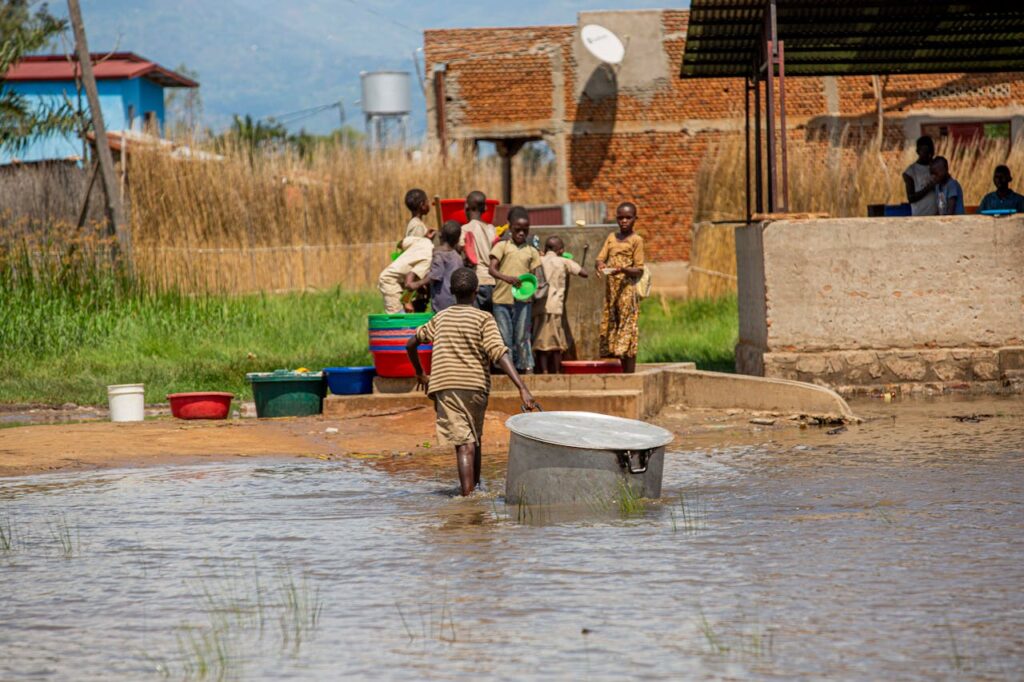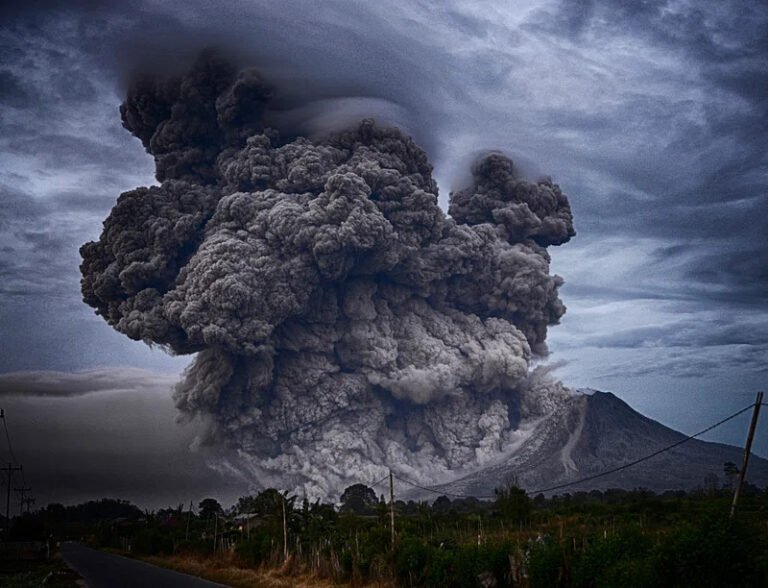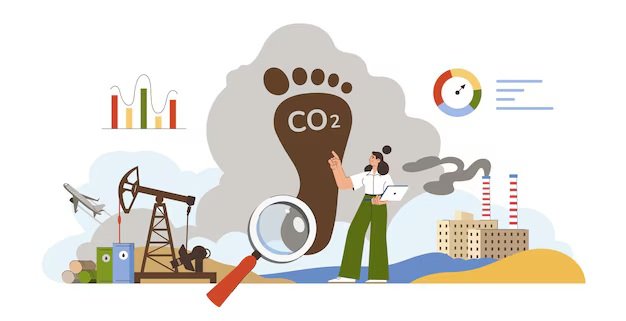20 Biggest Environmental Problems and How to Manage Them
The world we live in is changing fast, and not always for the better. Everywhere we turn, we hear about climate change, deforestation, pollution, and animals disappearing forever. These aren’t just big words or distant problems—these issues affect our air, our water, our food, and even our health. It’s easy to feel overwhelmed, like nothing we do can make a difference. But that’s not true.
Understanding these problems is the first step toward fixing them. This isn’t about guilt or blame—it’s about awareness and action. We have the knowledge, technology, and power to turn things around if we work together. Scientists, activists, and everyday people are already making real changes, and you can too.
In this guide, we’ll discuss 20 of the biggest environmental challenges our planet faces today, using real-world examples and expert insights to understand why they matter. Most importantly, we’ll focus on practical solutions—steps you can take to make a difference in your own life and community. The future isn’t written yet, and every small action counts. Let’s dive in and figure out how we can help heal our planet together.

In This Article
- 1. Climate Change and Global Warming
- 2. Deforestation and Habitat Loss
- 3. Air Pollution and Respiratory Diseases
- 4. Plastic Pollution and Marine Life Destruction
- 5. Biodiversity Loss and Species Extinction
- 6. Overfishing and Ocean Depletion
- 7. Water Scarcity and Pollution
- 8. Soil Degradation and Desertification
- 9. Industrial and Chemical Pollution
- 10. Food Waste and Overconsumption
- 11. E-Waste and Toxic Electronics
- 12. Ocean Acidification and Coral Bleaching
- 13. Urbanisation and Green Space Loss
- 14. Pesticide Overuse and Pollinator Decline
- 15. Microplastics in Food and Water
- 16. Fast Fashion and Textile Waste
- 17. Wildfires and Forest Degradation
- 18. Oil Spills and Marine Pollution
- 19. Nuclear Waste and Radiation Pollution
- 20. Noise and Light Pollution
- Conclusion
1. Climate Change and Global Warming
Climate change, driven predominantly by greenhouse gas emissions from burning fossil fuels, is one of the most critical challenges of our time. This has led to a significant rise in global temperatures. January 2025 was the warmest on record globally, with temperatures averaging 1.75°C above pre-industrial levels.
The consequences of this warming are palpable. For instance, Hawaii is experiencing land subsidence at rates 40 times faster than previously predicted, threatening homes and businesses with potential inundation in the coming decades.
How Can We Address This?
- Embrace Renewable Energy: Expanding decentralised energy solutions, such as microgrids and community solar projects, can enhance resilience while reducing fossil fuel dependence.
- Support Carbon Neutrality Initiatives: Implementing carbon capture and storage (CCS) and nature-based solutions like large-scale reforestation can help industries achieve net-zero emissions.
- Adopt Energy-Efficient Practices: Smart grid technology and AI-driven energy management can optimise power distribution and reduce wastage.

2. Deforestation and Habitat Loss
Forests are the lungs of our planet, absorbing carbon dioxide and releasing oxygen. Yet, deforestation continues at an alarming rate. Since 1990, approximately 420 million hectares of forest have been lost due to human activities like agriculture and logging. The Amazon rainforest, in particular, has seen significant deforestation, with projections indicating potential losses of up to 23.7 million hectares over five years.
This loss not only contributes to increased carbon emissions but also threatens countless species with extinction. According to UN Climate Action, warming of 1.5°C to 2°C will cause most terrestrial species’ ranges to shrink dramatically, adversely affecting biodiversity.
What Steps Can We Take?
- Support Reforestation Projects: Participating in or donating to tree-planting initiatives can help restore lost forests.
- Choose Sustainable Products: Opting for wood and paper products certified by organisations like the Forest Stewardship Council (FSC) ensures that they come from responsibly managed forests.
- Advocate for Conservation Policies: Supporting policies that protect existing forests and promote sustainable land use can curb deforestation.

3. Air Pollution and Respiratory Diseases
The air we breathe is fundamental to our health. However, air pollution remains a critical issue, leading to respiratory diseases and premature deaths. For instance, in the United States, there were 317 deforestation alerts reported between March 4 and March 11, 2025, covering a total of 3 hectares.
While this may seem small, it highlights ongoing environmental challenges that can contribute to air quality issues.
How Can We Improve Air Quality?
- Use Sustainable Transportation: Expanding urban infrastructure, including bike lanes, car-free zones, and electric public transport, can significantly cut emissions.
- Advocate for Stricter Air Quality Regulations: Mandating the use of advanced pollution control technologies, such as carbon filters and electrostatic precipitators in industrial processes, can curb toxic emissions.
- Support Clean Energy Solutions: Transitioning to cleaner household energy sources, like solar cookstoves and electric heating, can reduce indoor air pollution and improve health outcomes.

4. Plastic Pollution and Marine Life Destruction
Our oceans, covering over 70% of the Earth’s surface, are vital to life. Yet, plastic pollution poses a severe threat to marine ecosystems. Each year, millions of tons of plastic waste enter the oceans, harming marine life. Species such as sea turtles and seabirds often mistake plastic for food, leading to fatal consequences.
What Can We Do?
- Reduce Single-Use Plastics: Opting for reusable bags, bottles, and containers minimises plastic waste.
- Participate in Clean-Up Programs: Joining local beach or community clean-up events helps remove existing pollution and raises awareness.
- Support Plastic Bans: Advocating for bans on items like plastic bags and microplastics can lead to significant reductions in ocean pollution.

5. Biodiversity Loss and Species Extinction
Each species plays a unique and irreplaceable role in the ecosystem. However, the diversity of life on Earth is dwindling at an alarming rate. Recent reports paint a concerning picture. According to the World Wildlife Fund’s Living Planet Report 2024, monitored wildlife populations have declined by an average of 73% between 1970 and 2020. This decline is attributed to factors such as habitat destruction, poaching, and climate change.
In the United States, a recent study highlighted that numerous bird species are nearing a critical “tipping point,” with 112 species experiencing significant declines due to habitat loss and other environmental pressures.
Conservation Efforts:
- Protect Natural Reserves and National Parks: Supporting and advocating for the preservation of natural habitats ensures that wildlife has safe spaces to thrive.
- Support Conservation Organisations: Donating to or volunteering with organisations dedicated to wildlife protection can amplify conservation efforts.
- Adopt Sustainable Diets: Reducing meat consumption can decrease the demand for livestock farming, which is a significant driver of habitat destruction.

Learn More: Agricultural Waste Management for Environmental Sustainability
6. Overfishing and Ocean Depletion
Overfishing poses a severe threat to marine ecosystems. The Food and Agriculture Organisation (FAO) reported that in 2019, 35% of global fish stocks were overfished, marking a significant increase from previous decades. This overexploitation not only threatens marine biodiversity but also jeopardises the livelihoods of communities that are dependent on fishing. The situation has continued to worsen, with 37.7% of the world’s monitored marine fish stocks classified as overfished by 2021, reflecting a 2.3 percentage point increase from 2019.
Solutions:
- Choose Sustainably Sourced Seafood: Look for certifications like the Marine Stewardship Council (MSC) or Aquaculture Stewardship Council (ASC) when purchasing seafood to ensure it comes from sustainable sources.
- Reduce Seafood Consumption: Limiting seafood intake can alleviate pressure on overfished stocks, allowing populations to recover.
- Support Anti-Illegal Fishing Policies: Advocating for and supporting policies that combat illegal, unreported, and unregulated fishing can help protect marine ecosystems.

7. Water Scarcity and Pollution
Water is a precious resource, yet many regions face increasing water scarcity. The United Nations estimates that by 2025, nearly 1.8 billion people will experience absolute water scarcity. Pollution from industrial activities and agriculture exacerbates this crisis, contaminating freshwater sources and making them unsafe for consumption.
Practical Steps:
- Reduce Water Waste: Simple actions like taking shorter showers and fixing leaks can conserve significant amounts of water.
- Avoid Using Toxic Chemicals: Choosing eco-friendly household products prevents harmful substances from entering water supplies.
- Support Clean Water Initiatives: Backing organizations that work to provide access to clean water can make a substantial difference in affected communities.

8. Soil Degradation and Desertification
Healthy soil is the foundation of our food systems, but it’s under threat. The United Nations reports that 52% of agricultural land is degraded due to factors like poor farming practices and deforestation. This degradation leads to reduced agricultural productivity and contributes to desertification, affecting food security globally.
How to Combat It:
- Implement Sustainable Farming Techniques: Practices such as crop rotation, agroforestry, and reduced tillage can enhance soil health and prevent erosion.
- Support Afforestation Projects: Planting trees and restoring forests can stabilise soil and restore degraded lands.
- Promote Soil Conservation Education: Educating communities about the importance of soil health encourages the adoption of conservation practices.

9. Industrial and Chemical Pollution
Imagine living in a community where the air carries a faint, unpleasant odour, and the water from the tap tastes metallic. This isn’t a scene from a dystopian novel but a reality for many. Industries worldwide release toxic substances into our environment, affecting air, water, and soil quality. A stark example is the Love Canal disaster in the U.S., where chemical waste disposal led to severe health problems for residents.
The World Health Organisation estimates that in 2019, exposure to selected chemicals resulted in 2 million deaths globally. These chemicals contribute to chronic diseases, neurological disorders, and even cancers.
How to Manage It:
- Advocate for Stricter Waste Disposal Laws: By supporting policies that enforce rigorous waste management, we can reduce harmful emissions.
- Support Eco-Friendly Businesses: Choosing products from companies committed to sustainable practices encourages broader industry change.
- Reduce Use of Toxic Household Products: Opting for natural cleaning agents and materials minimises chemical residues in our homes and the environment.

10. Food Waste and Overconsumption
Picture this: while some families struggle to put food on the table, vast amounts of perfectly edible food end up in landfills. The Food and Agriculture Organisation reports that one-third of all food produced globally is wasted, exacerbating hunger and environmental degradation.
In the United States alone, food loss and waste embody 170 million metric tons of CO₂ equivalent greenhouse gas emissions annually, excluding landfill emissions.
What We Can Do:
- Buy Only What You Need: Planning meals and shopping lists helps prevent overbuying and waste.
- Support Food Redistribution Charities: Donating surplus food to organisations ensures it reaches those in need.
- Compost Organic Waste: Composting transforms food scraps into valuable soil nutrients, reducing landfill burden.

11. E-Waste and Toxic Electronics
Think about the old phones, laptops, or batteries tucked away in drawers. Globally, we generated 53.6 million metric tons of electronic waste in 2019, with only 17.4% properly recycled. This e-waste often contains hazardous materials like lead and mercury, which can leach into soil and water, posing health risks.
Improper disposal leads to environmental contamination, affecting ecosystems and human health.
Solutions:
- Recycle Electronics Responsibly: Utilise certified e-waste recycling programs to ensure safe disposal.
- Support Right-to-Repair Laws: Backing legislation that allows consumers to repair their devices can extend product lifespans and reduce waste.
- Purchase Durable Devices: Investing in high-quality, repairable electronics decreases the frequency of replacements.

12. Ocean Acidification and Coral Bleaching
The oceans are absorbing increased levels of carbon dioxide, leading to ocean acidification. This change harms marine life, particularly organisms like oysters and corals. For instance, oyster reef ecosystems are experiencing significant stress, impacting biodiversity and the livelihoods of communities that are dependent on them.
Coral reefs, vital for marine biodiversity, are also at risk. Ocean acidification impairs shellfish development and dissolves calcium-containing microorganisms at the base of the marine food web.
How to Help:
- Promote Low-Carbon Shipping and Sustainable Fishing: Reducing emissions from maritime transport and supporting responsible fishing practices can lessen the impact of ocean acidification.
- Support Marine Protected Areas (MPAs): Contributing to organisations that establish and enforce MPAs helps safeguard marine biodiversity and improve coral resilience.
- Use Reef-Safe Sunscreen: Choosing sunscreens free from harmful chemicals protects coral reefs from bleaching and damage.

Learn More: How Can Solar Energy Contribute to a Sustainable Development Program?
13. Urbanisation and Green Space Loss
Imagine your childhood park replaced by a new shopping complex. This scenario reflects a global trend where urban expansion encroaches upon natural habitats, transforming them into concrete landscapes. Currently, over half of the world’s population resides in urban areas, a figure projected to rise by 2.4 billion by 2050.
This rapid urbanisation often leads to the reduction of green spaces, which are vital for clean air, temperature regulation, and mental well-being. A recent analysis of satellite data from 344 cities across 62 countries revealed that 75% of these cities have experienced a decline in green spaces.
What We Can Do:
- Advocate for Green Infrastructure: Supporting policies that integrate parks, green roofs, and community gardens into urban planning can enhance the quality of life and promote biodiversity.
- Support Urban Rewilding Projects: Participating in initiatives that restore native vegetation and create wildlife corridors within cities can help reclaim nature in urban settings.
- Plant Trees and Rooftop Gardens: Engaging in local tree-planting events and cultivating rooftop or balcony gardens can contribute to urban greening efforts.

14. Pesticide Overuse and Pollinator Decline
Consider the humble bee, a small creature with a monumental role in our food production through pollination. However, bee populations are facing alarming declines. In the United States, beekeepers reported losing 44% of their colonies between 2015 and 2016, with similar trends continuing in subsequent years.
Pesticides, particularly neonicotinoids, have been identified as significant contributors to this decline. Research indicates that exposure to these chemicals can reduce bee population growth rates by up to 72%.
Alternatives:
- Use Natural Pest Control Methods: Implementing eco-friendly practices, such as introducing beneficial insects or using organic repellents, can mitigate pest issues without harming pollinators.
- Support Organic Farming: Choosing products from farms that avoid synthetic pesticides encourages sustainable agriculture and protects pollinator health.
- Plant Pollinator-Friendly Flowers: Cultivating native flowering plants in gardens and community spaces provides essential food sources for bees and other pollinators.

15. Microplastics in Food and Water
Microplastics—tiny plastic particles less than 5mm in size—have infiltrated our environment to the extent that they are now found in our food and water. A study by Orb Media discovered microplastics in 83% of tap water samples tested. The health implications of ingesting microplastics are still being studied, but potential risks include inflammation and exposure to toxic substances.
Ways to Reduce Exposure:
- Use Water Filters: Installing high-quality water filtration systems can help remove microplastics from drinking water.
- Avoid Synthetic Clothing that Sheds Microfibers: Choosing natural fibres like cotton or wool reduces the release of microplastics during laundry.
- Support Research on Plastic Alternatives: Advocating for and investing in the development of biodegradable materials can decrease plastic pollution at its source.

16. Fast Fashion and Textile Waste
The allure of trendy, inexpensive clothing has given rise to the fast-fashion industry, which now accounts for 10% of global carbon emissions. This sector not only contributes significantly to greenhouse gas emissions but also generates massive amounts of waste, with textiles often ending up in landfills.
Solutions:
- Buy Second-Hand or Sustainable Brands: Opting for thrift shopping or supporting brands committed to ethical production practices can reduce demand for fast fashion.
- Mend and Upcycle Clothing: Repairing garments or creatively repurposing them extends their lifespan and minimises waste.
- Reduce Unnecessary Shopping: Embracing a minimalist wardrobe and making mindful purchasing decisions can lessen the environmental impact of our clothing choices.

17. Wildfires and Forest Degradation
In recent years, we’ve witnessed an alarming surge in wildfires across the globe, particularly in regions like the United States, Australia, and the Amazon rainforest. These fires have not only devastated vast expanses of forest but have also profoundly impacted countless communities and ecosystems.
Data indicates that forest fires are becoming more widespread, burning nearly twice as much tree cover today as they did two decades ago. For instance, in the United States, the average number of wildfires annually over the past decade stands at approximately 64,100, collectively burning about 6.8 million acres each year.
Similarly, Australia faced unprecedented bushfires between 2019 and 2020, with estimates indicating that the fires burned over 12 million acres, an area roughly the size of Maryland.
The primary drivers behind this uptick in wildfires are rising global temperatures and human activities. Elevated temperatures lead to drier conditions, making forests more susceptible to fires. Human activities, such as land clearing and inadequate fire management practices, further compound the problem.
What Can We Do?
- Support Controlled Burns and Reforestation: Controlled or prescribed burns reduce excess vegetation, while planting fire-resistant tree species helps restore biodiversity.
- Advocate for Fire-Resilient Land Management: Supporting policies that implement zoning laws, fire-resistant infrastructure, and early warning systems can mitigate wildfire risks.
- Prevent Accidental Fires: Properly extinguishing campfires, avoiding outdoor burning during dry conditions, and following local fire regulations can significantly reduce accidental fires.

18. Oil Spills and Marine Pollution
Oil spills have long-lasting and devastating effects on marine ecosystems. A poignant example is the Deepwater Horizon disaster in 2010, which released approximately 134 million gallons of oil into the Gulf of Mexico over 87 days. This catastrophe led to the death of thousands of marine mammals and sea turtles and contaminated their habitats.
The spill area hosts over 8,000 species, including more than 1,270 fish, 218 birds, and 29 marine mammals. The introduction of oil into this rich ecosystem had cascading effects, from the immediate loss of life to long-term health issues in surviving species.
Solutions:
- Reduce Fossil Fuel Dependence: Promoting alternative fuels for shipping and aviation, such as green hydrogen and sustainable biofuels, can decrease reliance on oil.
- Support Stricter Offshore Drilling Regulations: Strengthening industry standards through AI-driven spill detection systems and enhanced emergency response protocols can prevent future disasters.
- Participate in Ocean Clean-Up Initiatives: Advancing new technologies, such as oil-eating bacteria and autonomous clean-up drones, can accelerate marine restoration efforts.

Learn More: What is Human-Environment Interaction?
19. Nuclear Waste and Radiation Pollution
Nuclear waste presents a unique challenge due to its long-term radioactivity, with some materials remaining hazardous for thousands of years. Proper disposal and management are critical to prevent environmental contamination and protect public health.
Preventative Measures:
- Invest in Safer Nuclear Technology: Researching small modular reactors (SMRs) and nuclear fusion technology can lead to safer, low-waste energy alternatives.
- Support Renewable Energy Transitions: Expanding investment in long-duration energy storage, such as next-generation battery systems, can help make renewables more reliable without increasing nuclear waste.
- Demand Stringent Waste Management Policies: Developing deep geological repositories and fostering international collaboration on nuclear waste disposal can ensure long-term safety.
20. Noise and Light Pollution
Excessive noise and artificial light not only disrupt human health by affecting sleep patterns and increasing stress but also interfere with wildlife behaviours, such as migration and reproduction.
What Can We Do?
- Use Noise Barriers and Quieter Appliances: Implementing noise-reducing measures in urban planning and opting for quieter household appliances can help lower ambient noise levels.
- Reduce Outdoor Lighting and Use Motion Sensors: Minimising unnecessary outdoor lighting and utilising motion sensors ensures lights are only on when needed, reducing light pollution.
- Support Dark Sky Reserves: Backing initiatives that create areas free from artificial light pollution helps preserve natural night environments, benefiting both wildlife and human stargazers.
Conclusion
Every problem outlined here has a solution, but it requires collective effort. By making informed choices, advocating for policy changes, and supporting sustainable initiatives, we can create a healthier planet. Change starts with you. What action will you take today?







